How an Internist Learned to Read ECGs Better Than a Cardiologist

At my medical school, everyone recommended taking the Clinical Electrocardiography elective in the fourth year. A kind man who had been interpreting ECGs for over 25 years taught the elective. We all had to read Rapid Interpretation of EKGs by Dale Dubin, and each day we spent hours going through real ECGs and trying to interpret them using the teacher’s systematic method. Then, we compared our interpretation to his official reading. And so it went, over and over, daily for a month. This was probably the most helpful part of my clerkship experience.
However, by the time I got to my internal medicine internship, I remembered roughly one-fourth of what I had learned in the elective. I felt a pressing need to have my ECG reading skills down pat, especially with CCU and ICU rotations looming and the eventuality of leading my own team on the medical floors.
A friend of mine who was already in his emergency medicine residency recommended his study method. Since he read numerous ECGs every day, I followed his advice and stocked up on some additional books:
1. ECGs for the Emergency Physician 1 by Amal Mattu and William Brady
How to use the book:
- Look at each ECG with its clinical scenario.
- Mentally note what is happening in the ECG (i.e., the rate and rhythm, any ST changes, how the T waves look).
- Turn to the back of the book and read the ECG interpretation paragraph.
- Take the main points from the ECG interpretation and add these notes to the initial ECG.
- Review 5 to 10 ECGs per day. At the start of each day, I’d go back and review the notes I added to the ECGs.
It looked something like this:
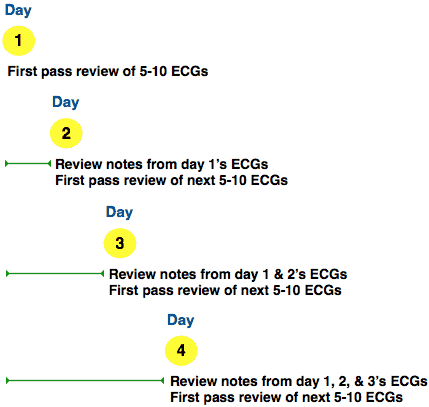
I knew very little in the beginning—my mental notes were limited. However, as the days went by, my knowledge began to increase and I recognized more and more characteristics in each ECG.
It is important to get through all 200 ECGs in this book. At 5–10 ECGs per day and a few days off throughout your review, this will take about 1–2 months. Reviewing the book lays the foundation for the next step.
2. 12-Lead ECG: The Art of Interpretation by Tomas Garcia and Neil Holtz
I believe this is the most effective book about learning ECGs ever published.
How to use the book:
Start on page 1. Some of the content may seem elementary, but understanding the “why” and “how” of ECGs is important for mastery. Think about the first 70 pages (Part 1) being a much clearer version of what Dubin’s book was trying to teach.
Part 2 is where you’ll find the gold. Read it like a book and be deliberate. Match the descriptions in the text with the characteristics in the examples. Circle the abnormalities, and write notes.
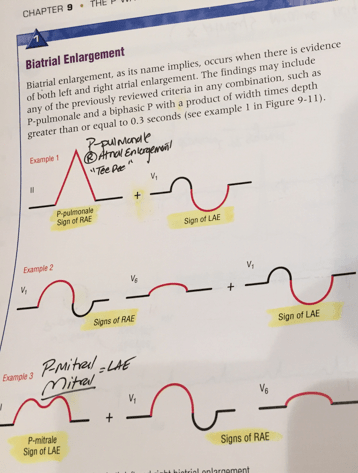
Identify these findings in the subsequent ECG.
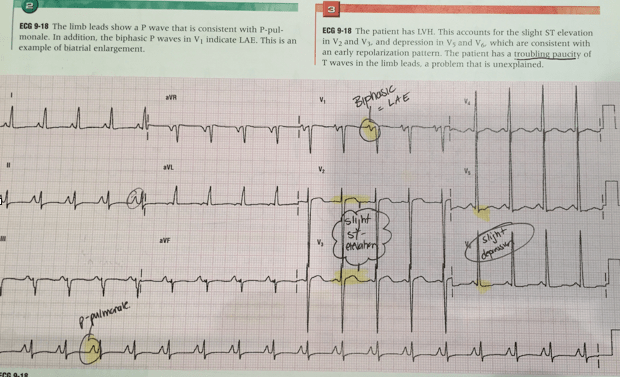
In addition to reading through each section and taking notes on the ECGs, create note cards. Yes…note cards for learning ECG interpretation.
There are two kinds of notecards: Type 1 only has writing on the front. Simply take an important point and write it on the card. Nothing on the back. No flipping.
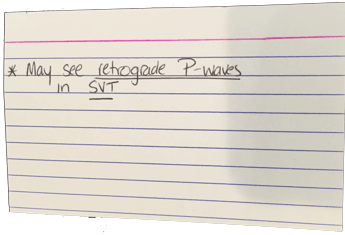
Type 2 notecards have a statement or question written on the front and an answer or explanation written on the back. These are meant to be flipped.
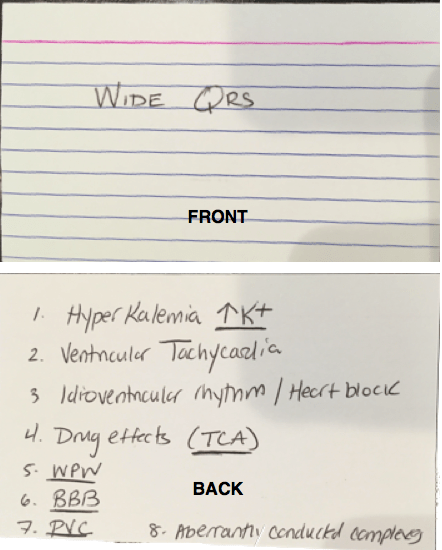
12-Lead ECG: The Art of Interpretation is a thick book, dense with information…but it is presented in such a simplified way that learning ECGs becomes fun. Yes, fun. How? Because the knowledge you’re gaining is practical. During your next shift rounding on floors, you will recognize more and more of what you’re learning every day. Your confidence will increase. Soon, you’ll be eager to explain your colleagues’ unfamiliar ECG findings. You’ll want to be called on during conference when an ECG is displayed and someone has to interpret it.
But, if you want to truly be confident at ECG interpretation, this course isn’t over.
The remaining area to master is rhythm interpretation. In my experience, most ECG discussions—when the ECG gets passed around from one person to another—occur when a rhythm is being identified. “It’s second-degree type 2….no, it’s complete heart block.” Sound familiar?
3. Arrhythmia Recognition: The Art of Interpretation by Tomas Garcia and Geoffrey Miller
How to use the book:
Set up in the same way of Garcia’s first book (12-Lead ECG: The Art of Interpretation), Arrhythmia Recognition: The Art of Interpretation begins with an introduction to arrhythmia recognition, then it spends six sections diving into the different dysrhythmias. The book is also filled with excellent pearls.
Ever heard of Ashman’s phenomenon?
Look for it yourself on an ECG or cardiac monitor of a patient with atrial fibrillation…I bet you’ll see it.
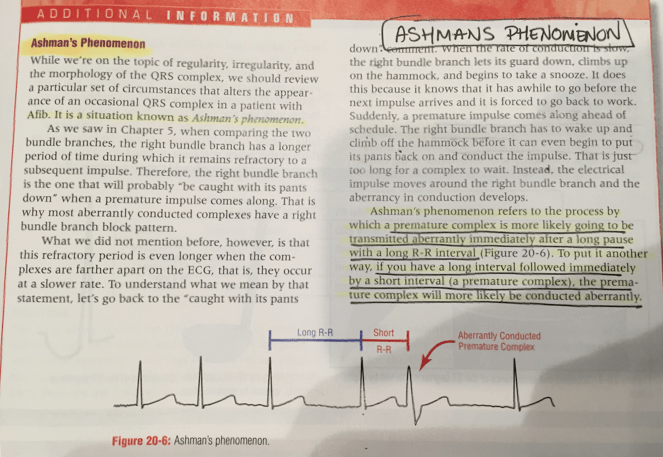
Approach this book in much the same way as 12-Lead ECG: The Art of Interpretation. Take what is being described in the text and identify the characteristics in the ECG. Circle the abnormalities, and write notes on the ECG. Each section ends with a useful self-test. Do each one.
The book also contains useful tables and graphs to help categorize various ECG characteristics.
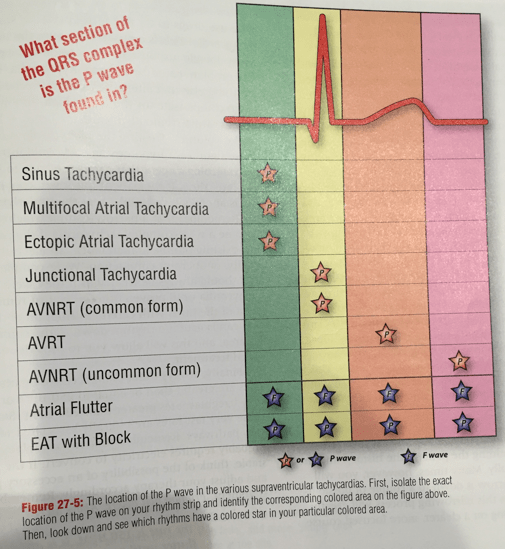
Arrhythmia Recognition: The Art of Interpretation is a beast, but it is essential to get through. If you spend 10–20 min per day on it, you’ll need about 2–3 months to truly understand it. This is the last necessary part to build your foundation; if you don’t spend the necessary time on it, you’ll have a weak foundation. You don’t want a weak foundation, do you?
So far, we’ve discussed the 3 most important books for learning ECGs:
- ECGs for the Emergency Physician 1 by Amal Mattu and William Brady
- 12-Lead ECG: The Art of Interpretation by Tomas Garcia and Neil Holtz
- Arrhythmia Recognition: The Art of Interpretation by Tomas Garcia and Geoffrey Miller
You now have a strong foundation—most likely stronger than 95% of your colleagues. So how do you get to the 99th percentile?
Remember all the way back in the beginning, when you were looking at ECGs and struggling to characterize them? Well, it is time to go back to the beginning…with a twist.
4. ECGs for the Emergency Physician 2 by Amal Mattu and William Brady
This is the second book in the series by Mattu and Brady and it is just as good as their first book.
Go through the book in the same way as you did for their first one.
- Look at each ECG with its clinical scenario.
- Mentally note what is happening in the ECG (i.e., the rate and rhythm, any ST changes, how the T waves look).
- Turn to the back of the book and read the ECG interpretation paragraph.
- Take the main points from the ECG interpretation and add these notes to the initial ECG.
- Review 5 to 10 ECGs per day. At the start of each day, I’d go back and review the notes I added to the ECGs.
However, this time you will have much more knowledge and understanding of what is going on in each ECG. For some of you, this may seem too easy! But don’t skip this exercise. It’s solidifying what you already know and filling in the gaps in your weaker areas. You’ll forget some of what you learned in the earlier reading, but this is important. Forgetting ultimately leads to a better understanding. The harder you work to retrieve forgotten information, the more solidified it becomes in your long-term memory.
You’re ready to be an “ECG wizard”
After working through these four books, you’ll have an understanding of ECGs that will last your entire career. You’ll be able to glance at an ECG and make an accurate diagnosis. You’ll be confident and, if you want to, you can establish yourself as the “ECG wizard” of your class, department, or practice. And you will have no problem when confronted with an ECG during your internal medicine board review or certification exams.
Be sure to make a habit of following up the ECGs that you interpret while working clinically. For CCU patients, discuss the ECG readings with the cardiologist and note the characteristics to look out for. Follow up on the official cardiologist reading of all ECGs. If a patient goes to the electrophysiology lab, find out how other people interpreted their ECGs. For patients in the CCU or ICU or on the cardiology floors who have had MIs, compare the ECGs from their presentation in the ED with their ECGs post-treatment. This habit—the follow-up—is the fastest, least expensive way to become an expert. Find out when you are right and learn from when you were wrong.
Good luck,
Shari Weisenfeld, MD
Content Editor—Internal Medicine, Rosh Review
You can learn ECG interpretation from clinical vignettes in our Internal Medicine Qbank.
None of the book links above are affiliate links. They are pure recommendations.
Get Free Access and Join Thousands of Happy Learners
You must be logged in to post a comment.





Comments (0)